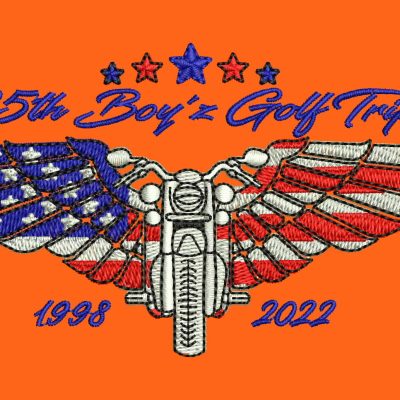Personalized Digitizing for Embroidery: Tailored to Your Demands
Grasping the Needlework Digitizing Refine: Your Ultimate Overview
Embroidery digitizing is a meticulous craft that calls for precision and expertise to translate intricate styles into digital layouts for machine embroidery. As craftsmens start this trip to grasp the embroidery digitizing process, a detailed understanding of the basics sets the foundation for quality. Beyond the fundamental expertise lies a realm of sophisticated software application, specialized tools, and nuanced methods waiting to be checked out. By diving right into the nuances of digitizing, one can open a world of innovative opportunities and elevate their embroidery projects to new heights.

Comprehending Needlework Digitizing Fundamentals
Needlework digitizing essentials form the foundation whereupon complex designs are equated right into machine-readable formats for precise stitching. This first step in the needlework digitizing procedure is important for ensuring that the last stitched product is a devoted depiction of the original layout. Comprehending needlework digitizing basics entails comprehending key principles such as stitch types, stitch direction, density, padding, and draw payment.
Stitch kinds play an essential function in identifying the visual and textural end result of the embroidered layout. By picking the appropriate stitch kind, whether it be satin, fill, or running stitch, digitizers can achieve the preferred effect and improve the general high quality of the needlework. In addition, sew direction affects the flow and dimension of the design, while thickness identifies the spacing and coverage of the stitches.
In addition, rug sewing provides stability to the design by securing the textile and avoiding distortion during the embroidery procedure. Draw compensation is another important factor to consider to neutralize the natural propensity of material to contract when sewn. Understanding these needlework digitizing essentials is essential for creating professional-quality stitched items.
Selecting the Right Digitizing Software
Choosing the suitable digitizing software application is an important choice that significantly impacts the performance and quality of the embroidery digitizing procedure. Digitizing for Embroidery. When choosing the best digitizing software application, it is crucial to think about factors such as the intricacy of layouts you prepare to produce, the user-friendliness of the software, the degree of customer support supplied, and the compatibility with your needlework equipment
There are various digitizing software program options offered in the marketplace, varying from basic programs for beginners to advanced software program for expert digitizers. Some preferred choices consist of Wilcom EmbroideryStudio, Hatch Needlework Software, and PulseID. These software supply a variety of devices and attributes to assist you create intricate designs easily.
Prior to deciding, it is suggested to explore the different software options with totally free tests or trials to determine which one finest fits your requirements. In addition, reviewing evaluations and seeking recommendations from experienced digitizers can click for source provide important understandings right into the staminas and weak points of each software (Digitizing for Embroidery). By thoroughly assessing your demands and comparing the functions of different digitizing software, you can make an enlightened choice that boosts your embroidery digitizing workflow
Digitizing Tools and Methods

Optimizing Layout Setup for Needlework
Understanding the details of layout setups is essential in accomplishing ideal lead to the embroidery digitizing process, building upon the foundation laid by understanding digitizing tools and strategies. When maximizing layout setups for embroidery, it is vital to think about aspects such as stitch kind, density, rug, pull payment, and registration. Stitch type option influences the general feel and look of the layout, with alternatives like satin, fill, and running stitches using different textures and effects. YOURURL.com Thickness describes the spacing and thickness of stitches, affecting the layout's insurance coverage and durability. Correct padding stitching offers stability and protects against textile distortion, particularly for complicated designs or on stretchy products. Draw settlement readjusts for textile stretch throughout sewing, guaranteeing accurate style duplication. Registration settings line up different elements of pop over to this web-site the layout properly, preserving total layout honesty. By fine-tuning these layout settings, embroiderers can improve the high quality and accuracy of their stitched creations.

Troubleshooting Common Digitizing Issues
When running into common digitizing problems during the needlework procedure, it is vital to understand the source and carry out reliable options promptly. One typical problem is stitch thickness concerns, where stitches may be too thick, causing the fabric to tighten, or as well sparse, resulting in voids in the style. Readjusting the stitch density setups in the digitizing software program can aid settle this problem.
One more regular challenge is string breaks throughout the needlework process. This can occur due to different reasons such as wrong tension setups, plain needles, or using low-quality string. Making certain correct upkeep of the needlework device, including routine needle modifications and stress changes, can reduce the event of thread breaks.
Moreover, style enrollment mistakes can lead to misaligned aspects within the needlework style. Examining the design positioning in the digitizing software and making required adjustments before sewing can assist in preventing this problem. By addressing these usual digitizing issues quickly and successfully, you can make certain a smoother needlework process and high-quality ended up products.
Verdict
In verdict, understanding the needlework digitizing process requires a solid understanding of the essentials, the right choice of software program, and understanding of tools and methods. Optimizing design settings and fixing common digitizing concerns are essential action in guaranteeing premium needlework results. By following these steps faithfully, one can accomplish accuracy and efficiency in the digitizing process.